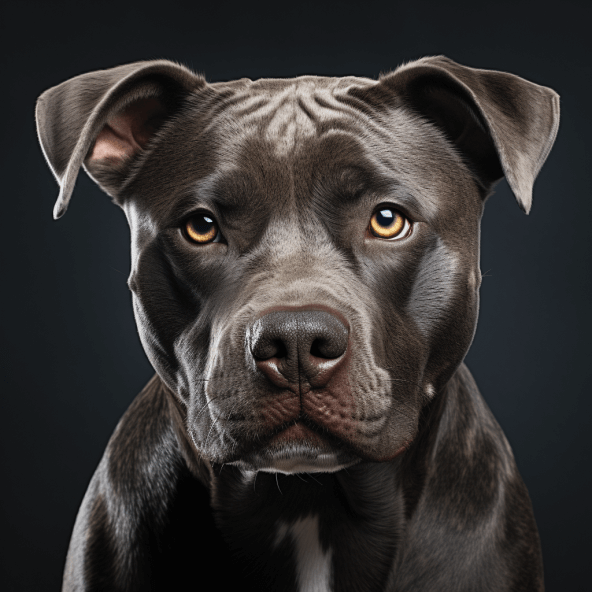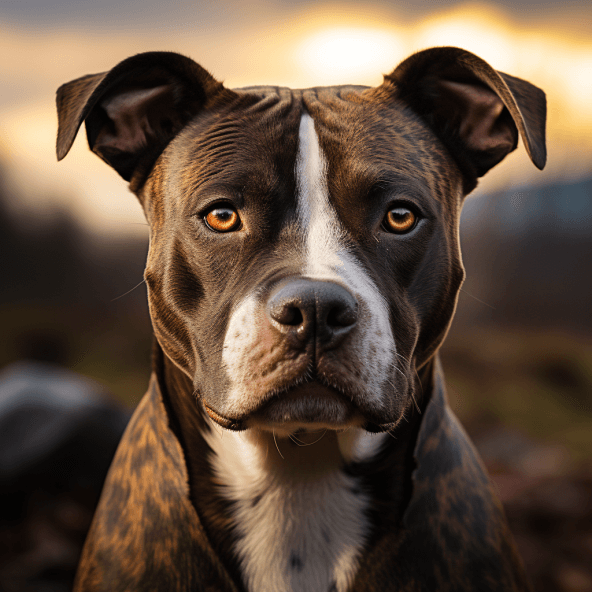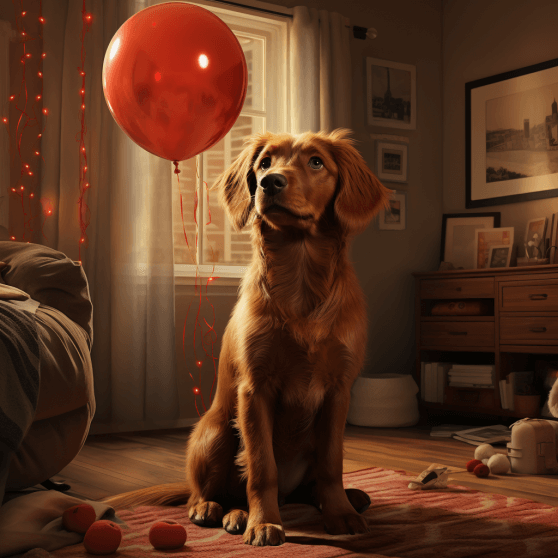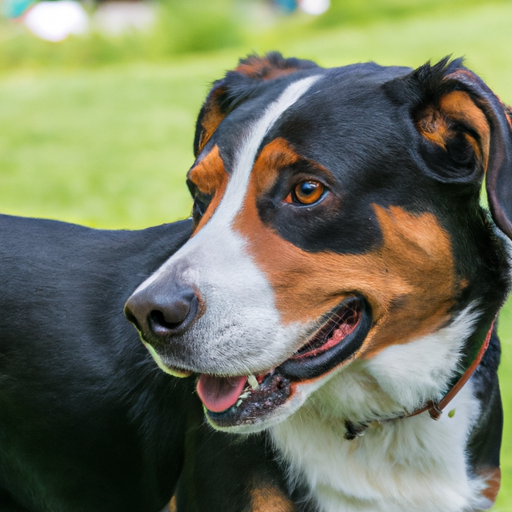American Pit Bull Terrier
You’re about to embark on an enlightening journey into the world of American Pit Bull Terriers. In this exploration, you’ll encounter critical features, helpful tips, and essential attributes about this dog breed. Known for their courage and strength, these dogs also overflow with an affectionate personality and may surprise you with their playful demeanor. The American Pit Bull Terrier, a breed often misunderstood but deeply loved by owners. In the end, you’ll hold a richer, more nuanced understanding of this noble breed. Strap in for an enlightening read, tailored to give you a comprehensive view of these beautiful, muscular canines.
History and Origin of the American Pit Bull Terrier
The roots of the American Pit Bull Terrier run deep, trailing back over centuries and across continents. A breed of determination, dynamism and raw power, the history of the American Pit Bull Terrier is as interesting as the breed itself.
Origins in England
It’s believed that your beloved pit bull traces its lineage back to 19th-century England, where breeders melded bulldogs and terriers, combining the strength of the bulldog with the energetic and lively nature of the terrier. The result? The Bull and Terrier breed, the immediate predecessors of the American Pit Bull Terrier. Initially bred for gruesome blood sports including bull and bear-baiting, these dogs were highly prized for their fighting skills and tenacity.
Migration to America
In the late 19th century, many British immigrants brought their Bull and Terrier dogs to America, pulling this breed into a new chapter in their history. In America, these dogs took on a more varied role, from guarding farms to hunting wild game and even serving as family pets. A shift in purpose also led to a shift in name, eventually culminating in the popular title – the American Pit Bull Terrier.
Role in American History
The American Pit Bull Terrier played an essential role in American history. These dogs were the ultimate utility dog, taking on jobs of herding cattle, protecting farms against pests, and serving as beloved companions. As pit bulls became a common fixture in American family life, they started gaining a reputation as “nanny dogs” due to their loyalty and patience with children.
Physical Characteristics of the American Pit Bull Terrier
There’s no mistaking an American Pit Bull Terrier, thanks to its distinctive physical traits. These dogs are a study in muscle and movement, boasting a physique that’s both powerful and agile.
Size and Weight
Your typical American Pit Bull Terrier stands between 17 to 21 inches tall at the shoulder, and weighs between 30 to 85 pounds. They possess a well-muscled body, a testament to their breed’s historical roles demanding strength and perseverance.
Coat and Colors
Pit Bulls have short, smooth coats that come in almost every color and pattern imaginable. From solid black, white, or brown, to brindle and spotted, the array of Pit Bull coat colors is as diverse as the breed itself.
Distinctive Features
The American Pit Bull Terrier is known for its wide, flat head and pronounced cheek muscles. Their eyes are set low and are usually round and of any color. They have ears that may be cropped or uncropped, and a tail that’s short and tapered.
Personality and Temperament of the American Pit Bull Terrier
Despite much controversy surrounding this breed, the American Pit Bull Terrier is a dog of many dimensions, one with a big heart and a zest for life.
General Temperament
Pit Bulls are generally affectionate, amiable, and good-natured, often filled with a boundless energy that makes them delightfully playful. They’re also known for their bravery and courage, and their desire to please their people makes them exceptionally trainable.
Behavior with Humans
American Pit Bull Terriers love people. They’re known for their loyalty towards their family and enjoy being part of the action. They’re often friendly towards strangers too, but that doesn’t make them any less protective; they won’t hesitate to defend their people if necessary.
Behavior with Other Animals
While they do have a history as fighting dogs, a well-socialized Pit Bull can get along just fine with other dogs and animals. However, due to their strength and tenacity, it’s essential they are socialized correctly from a young age to prevent potential aggression.
Health and Lifespan of the American Pit Bull Terrier
Like any breed, the American Pit Bull Terrier can be prone to specific health concerns and has a lifespan that, while moderate in length, can be maximized with proper care.
Common Health Issues
These robust dogs are usually quite healthy but can potentially suffer from hip dysplasia, cataracts, allergies, and heart disease. Regular veterinary check-ups are important to ensure early detection and treatment.
Typical Lifespan
The typical lifespan of an American Pit Bull Terrier is between 12 to 16 years. Providing a balanced diet, regular exercise, and regular veterinary checkups can all contribute to ensuring your Pit Bull lives a long and healthy life.
Care and Prevention of Health Issues
To help maintain their health, American Pit Bull Terriers need a balanced diet tailored to their age, size, and activity level. Regular exercise is key not only to keep them fit but also mentally stimulated. Regular vet visits, dental care, and keeping them up-to-date on vaccinations and screenings can all contribute to preventing health issues.

Care and Grooming of the American Pit Bull Terrier
Caring for an American Pit Bull Terrier requires attention to their dietary needs, exercise demands, and grooming requirements – all relatively easy tasks given how low-maintenance this breed tends to be.
Feeding and Diet
A high-quality, protein-rich diet is suggested for these muscular animals. The quantity of food will depend on the dog’s size, age, and activity level. But, as always, any changes to diet or concern about weight should be discussed with a vet.
Exercise Needs
Pit Bulls are a highly energetic breed and need regular exercise to keep them healthy and happy. This could be anything from long walks and hikes to games of fetch, tug-of-war, or even agility training.
Grooming Requirements
Since Pit Bulls have short, thin coats, their grooming needs are minimal. Regular brushing will help to keep the coat shiny and healthy, and baths are necessary only as needed. Regular ear checking, nail trimming, and dental care are also part of a Pit Bull’s grooming routine.
Training and Socialization of the American Pit Bull Terrier
Training and socialization form an essential part of the care routine for a breed as powerful and energetic as the American Pit Bull Terrier.
Training Techniques
Training a Pit Bull takes patience, consistency, and positive reinforcement methods. Start training early, keep sessions short and varied to maintain their interest. Remember, Pit Bulls aim to please their owners, so harness this to your advantage during training sessions.
Importance of Early Socialization
Socialization is crucial for this breed. By exposing your Pit Bull to various people, places, sounds, and experiences, you’ll help them develop into a well-rounded dog. It’s particularly important that they learn to be tolerant with other dogs and animals, given their history and their strength.
Addressing Behavioral Issues
Any potential behavioral issues should be addressed immediately. Whether it’s aggression, separation anxiety, or excessive barking, don’t hesitate to enlist the help of a professional trainer or behaviorist. Remember, training and socialization go hand-in-hand with raising a well-behaved and balanced Pit Bull.
American Pit Bull Terrier and Children
Despite what you may have heard, Pit Bulls and kids can make the best of friends, providing some basic safety measures are followed.
Interaction with Children
Known in the past as “nanny dogs,” Pit Bulls can be patient and gentle with children, enjoying playtime as much as the kids do. They’re also protective, which adds an extra layer of safety for the children in the home.
Safety Measures
Even though they are friendly and often great with kids, Pit Bulls are a powerful breed, and it’s essential to always supervise their interactions with small kids. Teaching kids how to behave around dogs, like not pulling their tails or disturbing them while they’re eating, is also crucial.
Teaching Children to Interact with the Dog
Children should be taught to respect dogs and their space. Basic rules include not bothering the dog when it’s sleeping or eating, being gentle during play, and understanding the dog’s body language to know when it wants to be left alone.
Legal Issues and Controversies Surrounding the American Pit Bull Terrier
Unfortunately, Pit Bulls have often been vilified and misunderstood, a perception that can lead to legal issues and challenges for owners.
Breed-Specific Laws
In light of attacks reported in media, some regions have implemented breed-specific legislation (BSL), which may require muzzle usage, special permits, or even completely ban the breed. Any potential Pit Bull owner needs to be aware of their local laws regarding the breed.
Public Perception and Misunderstandings
Public perception has often wrongly painted Pit Bulls as aggressive and dangerous. But anyone who’s owned a Pit Bull will affirm they’re loving and loyal companions. The real cause for their reputation is improper socialization, training, or mistreatment by owners.
Advocacy for the Breed
Various organizations and groups actively advocate for Pit Bulls, working to dismantle the misconceptions surrounding them, and fighting against unfair laws. They aim to show the world what Pit Bull owners already know: that these dogs aren’t monsters, but beautifully complex beings deserving of love and respect.
Adoption and Buying Considerations for the American Pit Bull Terrier
If you’re considering adding a Pit Bull to your family, you should be aware of the commitment you’re making and ensure that you’re getting your new furry friend from a legitimate source.
Choosing a Reputable Breeder
A reputable breeder breeds with the dog’s health, temperament, and the breed standard in mind. They should offer health clearances, be honest about the breed’s potential health problems, and allow you to meet the puppy’s parents.
Adopting from a Shelter
Due to their misunderstood reputation, many Pit Bulls end up in shelters. Adopting not only gives one of these dogs a loving home, but also frees up space for another dog in need. Shelters generally also take care of initial health check-ups and vaccinations.
Understanding the Commitment
Owning a Pit Bull, like any dog, is a serious commitment. You need to be ready for a decade or more of care, including food, comfort, exercise, training, and health care. Also, recognize that with this breed, you’ll have to deal with the public’s perception and potentially breed-specific legislation.
The American Pit Bull Terrier in Popular Culture
Even with the misconceptions and controversies, the American Pit Bull Terrier has found its way into popular culture, with some becoming beloved public figures.
Famous American Pit Bull Terriers
Famous Pit Bulls include Pete the Pup from the “Little Rascals” and Sergeant Stubby, a war hero who served in the First World War. These well-known Pit Bulls demonstrate the breed’s diverse capabilities and charm.
Representation in Media
Though often depicted negatively in media, some films and TV shows have started to challenge the stereotypical image. Pit Bulls are increasingly being shown as loyal companions and heroes rather than aggressive villains.
Impact on Breed Perception
Celebrity ownership and positive portrayal can help improve breed perception. However, each Pit Bull owner can contribute to the breed’s image by fostering a well-behaved, well-adjusted, and loved dog. You and your pup can be ambassadors for the breed just by joining the ranks of happy, responsible Pit Bull households.






